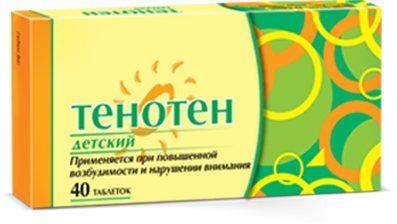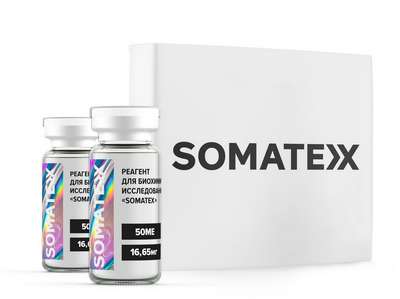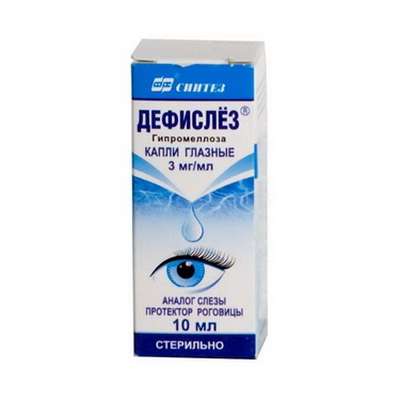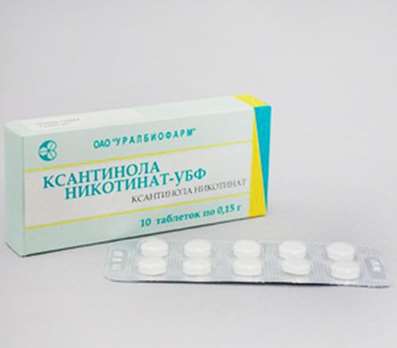Instruction for use: Intratect
I want this, give me price
Dosage form: Solution for infusion
Active substance: Immunoglobulinum humanum normale
ATX
J06BA02 Normal human immunoglobulin for intravenous administration
Pharmacological groups:
Immunoglobulins
The nosological classification (ICD-10)
B20 Disease caused by the human immunodeficiency virus [HIV], manifested as infectious and parasitic diseases
C90 Multiple myeloma and malignant plasma cell neoplasms: Retikuloplasmocytosis; Rustitsky's disease; Rustitskogo-Kahler's disease; Plasma cell myeloma; Myelomatosis
C91.9 Other lymphoid leukemia
D69.3 Idiopathic Thrombocytopenic Purpura: Werlhof's Disease; Idiopathic autoimmune thrombocytopenia; Idiopathic thrombocytopenic purpura of adults; Idiopathic thrombocytopenic purpura in adults; Immune idiopathic thrombocytopenic purpura; Immune thrombocytopenia; Bleeding in patients with thrombocytopenic purpura; Evans Syndrome; Thrombocytopenic purpura; Thrombocytopenia of immune origin; Chronic idiopathic thrombocytopenic purpura; Essential thrombocytopenia; Autoimmune thrombocytopenic purpura in pregnancy; Posttransfusion purpura
D80 Immunodeficiencies with predominant antibody deficiency: Disease of cold antibodies; Agammaglobulinemia acquired; Agammaglobulinemia linked to the X chromosome; Agammaglobulinemia swiss; Secondary hypogammaglobulinemia; Hypogammaglobulinemia; Severe secondary hypogammaglobulinemia; Secondary antibody deficiency syndrome
D81 Combined Immunodeficiencies: Duncan Syndrome; Combined immunodeficiency; Severe combined immunodeficiency (KID)
D83 Conventional Variable Immunodeficiency: Total Variable Immunodeficiency; Immunodeficiency variable
G61.0 Guillain-Barre Syndrome: Miller-Fisher Syndrome; Polyneuropathy is infectious idiopathic; Polyradiculoneuritis acute primary idiopathic; Poliradiculoneuropathy acute demyelinating Guillain Barre; Guillain-Barre-Strol syndrome; The Landry-Guillain-Barre Syndrome
M30.3 Mucous-cutaneous lymphonodular syndrome [Kawasaki]: Pediatric polyarteritis; Kawasaki disease; Kawasaki Syndrome; Mucous-cutaneous lymphonodulary syndrome; Dermal-mucous lymphadenopathy; Lymphonodular pharyngitis
Z94.8 Presence of another transplanted organ or tissue: Pancreas transplantation; Transplantation of spongy tissue; Bone marrow transplantation; A bone marrow transplant; Bone marrow transplantation; Xenotransplantation; TCM; Cell islet allotransplantation; Parathyroid autotransplantation
Composition
Solution for infusion 1 ml
Active substances: Human plasma proteins 50 mg
Of which: immunoglobulin G (IgG) at least 96%
Immunoglobulin A (IgA) not more than 2 mg
Distribution of subclasses of immunoglobulin G
IgG1 - about 57%; IgG2 - about 37%; IgG3 - about 3%; IgG4 - about 3%
Auxiliary substances: glycine - 300 μmol; Water for injection - up to 1 ml
Description of dosage form
Colorless or light yellow, transparent or slightly opalescent liquid.
Pharmachologic effect
Mode action - immunomodulating.
Pharmacodynamics
Intratect contains mainly IgG with a wide spectrum of antibodies against various pathogens of infections. Intratect from the pool of plasma more than 1000 donors, the distribution of subclasses IgG corresponds to that in human plasma. Immunological properties of Intratecht allow to bring the pathologically low concentration of Ig to a normal level. The mechanism of action for other indications, other than replacement therapy in patients with immunodeficiency, is completely unclear, and appears to be in immunomodulatory effects.
Pharmacokinetics
Bioavailability of Ig with IV injection is 100%.
It is distributed between plasma and extravascular fluid quickly enough, and in 3-5 days an equilibrium state between intravascular and extravascular space is reached.
T1 / 2 Intratect in patients with primary immunodeficiency is approximately 27 days. T1 / 2 may differ in different patients, especially in the case of primary immunodeficiencies. IgG and its complexes are utilized by the cells of the reticuloendothelial system.
Indications for the preparation Intratect
Substitution treatment:
-rogenetic immunodeficiency (complete or selective immunodeficiency, general variable immunodeficiency, severe combined immunodeficiency, Wiskott-Aldrich syndrome);
-chronic lymphocytic leukemia and myeloma with severe secondary selective immunodeficiency, as well as recurrent bacterial infections;
- Children with AIDS, as well as recurrent bacterial infections.
Immunomodulation:
- idiopathic thrombocytopenic purpura in adults and children with a high risk of bleeding before surgery (to adjust the number of platelets);
-allogenic bone marrow transplantation;
-Guillain-Barre syndrome;
- Kawasaki syndrome.
Contraindications
Hypersensitivity to any component of the drug;
Increased sensitivity to human Ig, especially in rare cases of a deficiency in the blood of IgA and the presence of antibodies against IgA.
Application in pregnancy and breastfeeding
The absence of risk of using this drug during pregnancy has not been studied in controlled clinical trials, so during pregnancy and lactation it should be used after a thorough assessment of the risk and benefit. The long experience of medical use of Ig does not allow expecting any harmful influence on the course of pregnancy, as well as on the fetus and the newborn. Ig injections are excreted with human milk and may facilitate the transfer of protective antibodies to newborns.
Side effects
Possible side effects such as chills, headache, fever, nausea, vomiting, allergic reactions, aching joints and mild back pain.
In rare cases, as a result of Ig administration, a sudden drop in blood pressure may be possible, and in some cases - anaphylactic shock, even if the patient did not show increased sensitivity during the previous administration of the drug.
In connection with the introduction of human Ig, cases of the appearance of signs of aseptic meningitis and, in rare cases, hemolytic anemia / hemolysis, as well as transient skin reaction (rash or hyperemia), which completely disappeared after discontinuation of therapy, were observed. An increase in serum creatinine and / or acute renal failure was also observed.
In single cases, thromboembolic complications were noted in elderly patients, patients with signs of cerebral or cardiac ischemia (impaired blood supply to the brain or heart), as well as patients with overweight or severe hypovolemia.
In case of occurrence of reactions of intolerance it is necessary either to reduce the speed of the drug administration, or to suspend its infusion. The choice of appropriate interventions depends on the type and severity of the side effect.
In the event of a negative effect on kidney function, Ig therapy should be discontinued.
In case of shock, follow the current recommendations for antishock therapy.
When using drugs from human blood or plasma, it is impossible to completely eliminate the risk of transmission of known and as yet unknown virus diseases. To reduce the risk of transmission of pathogens, donor criteria are selected according to strict criteria, donor plasma is tested and selected and the pool of plasma is monitored. Stages for the removal and / or inactivation of pathogens are included in the manufacturing process (see "Additional Information").
Interaction
Live viral vaccines: Ig administration can adversely affect the effectiveness of live vaccines against such viral diseases as measles, rubella, mumps and chicken pox for 6 weeks and up to 3 months. Vaccination with an appropriate live vaccine should be given no earlier than 3 months after the introduction of Intratect. In the case of measles vaccination, this effect of Ig can last up to 1 year. Before the expiration of this period, the measles vaccine should be given after determining whether the patient has the appropriate antibodies.
Serological laboratory studies: after Ig administration, a temporary increase in the titer of various passively introduced antibodies is possible, which can lead to false positive analyzes in serological testing.
Passively introduced antibodies against erythrocyte antigens (eg A, B, D) can influence serological parameters such as the level of alloantibodies to erythrocytes (eg Coombs reaction) and the number of reticulocytes, a test for haptoglobin.
Dosing and Administration
IV the form of infusion (drip), preheated to room temperature. The initial infusion rate is 1.4 ml / kg body weight per hour, after 30 min with good drug tolerance, the rate can be gradually increased to a maximum of 1.9 ml / kg body weight per hour and maintained until the end of the injection. Before the introduction of the Intratect, one must visually check whether the solution contains suspended particles and whether it is colored. The solution should be clear or slightly opalescent. An opaque or precipitating solution should not be used.
The open vial should be used immediately. Because of the risk of bacterial contamination, the unused solution should be discarded.
With substitution therapy, the dosage should be selected individually, depending on the patient's immune status and the severity of the disease.
Substitution therapy for primary immunodeficiencies: the initial dose is 0.4-0.8 g (8-16 ml) / kg body weight, then the drug is injected every 3 weeks at a dose of 0.2 g (4 ml) / kg body weight. The necessary dose to maintain the IgG titer in the plasma at a level of 6 g / l is 0.2-0.8 g (4-16 ml) / kg body weight per month. After reaching Css, the drug is administered at intervals of 2-4 weeks. To determine the optimal dose and the interval between administrations, the level of IgG in the plasma should be monitored.
Replacement therapy for chronic lymphocytic leukemia, myeloma with severe secondary hypogammaglobulinemia and recurrent bacterial infections; Substitution therapy for recurrent bacterial infections in children with AIDS: 0.2-0.4 g (4-8 ml) / kg body weight every 3-4 weeks.
Idiopathic thrombocytopenic purpura: in the treatment of acute episodes, the drug is prescribed in a dose of 0.8-1 g (16-20 ml) / kg of body weight and, if necessary, repeat this dosage on the third day or 0.4 g (8 ml ) / Kg body weight per day for 2-5 days in a row. If necessary, therapy can be repeated.
Guillain-Barre syndrome: 0.4 g (8 ml) / kg body weight daily for 3-7 days.
Kawasaki syndrome: 1.6-2 g (32-40 ml) / kg body weight, in several doses for 2-5 days or 2 g (40 ml) / kg of body weight in a single dose, as an adjunct to acetylsalicylic acid therapy .
Allogeneic bone marrow transplantation: Intratectom therapy can be carried out as part of preparations for and after transplantation. To treat infection and prevent the "graft versus host" reaction, the dosage should be selected individually. The recommended initial dose is 0.5 g (10 ml) / kg body weight and is administered once 7 days before transplantation. Introduction continues weekly for three months after transplantation. With persisting immunodeficiency, up to the normalization of the level of antibodies, a dose of 0.5 g (10 ml) / kg of body weight is recommended once a month.
Recommendations for dosage are summarized in the table.
Table
Dosage recommendations for Intratect
| Indication | Dose, g / kg body weight | Intervals between infusions |
| Substitution therapy for primary immunodeficiencies | The initial dose is 0.4-0.8 | |
| next — 0,2–0,8 | Every 3 weeks for an IgG level in the plasma, a minimum of 4-6 g / l | |
| Substitution therapy for secondary immunodeficiencies | 0,2–0,4 | Every 3-4 weeks for an IgG level in the plasma, a minimum of 4-6 g / l |
| AIDS in children | 0,2–0,4 | Every 3-4 weeks for an IgG level in the plasma, a minimum of 4-6 g / l |
| Immunomodulation: | ||
| Idiopathic thrombocytopenic purpura | 0,8–1 | In a single dose, if necessary - repeatedly in the same dose on the third day |
| or 0,4 (a day) | 2-5 days in a row | |
| Guillain-Barre Syndrome | 0,4 (a day) | 3-7 days in a row |
| Kawasaki Syndrome | 1,6–2 | Several injections for 2-5 days (as an adjunct to acetylsalicylic acid therapy) |
| or 2 | In a single dose (as a supplement to therapy with acetylsalicylic acid) | |
| Allogeneic bone marrow transplantation: | ||
| Therapy of infection and prophylaxis of the "transplant versus host" reaction | 0,5 | Weekly, initiation of therapy - 7 days before transplantation; The end - after 3 months after it |
| Persistent immunodeficiency | 0,5 | Monthly before the normalization of the level of antibodies |
Intratect cannot be confused with other drugs. No other drugs can be added to the IntraTect solution. A change in the electrolyte concentration or the pH value can cause denaturation or precipitation of the protein.
Overdose
Overdose of the drug in patients at risk, especially people of old age, as well as patients with impaired renal function, can lead to hypervolemia and increased blood viscosity.
Precautionary measures
Certain severe side effects may depend on the rate of administration, so the rate of administration recommended in the section "Method of administration and dose" should be strictly observed.
Certain side effects can occur more often:
- at a high rate of administration;
- in patients with hypogammaglobulinemia or agammaglobulinemia with or without IgA deficiency;
- in patients receiving human Ig for the first time, or in rare cases when switching to another immunoglobulin preparation, or if treatment with immunoglobulins was carried out for a long time.
True hypersensitivity reactions occur in extremely rare cases in which there is no IgA in the blood and there are antibodies to IgA.
In most cases, possible complications can be avoided if:
- make sure that the patient does not show allergic reactions to human Ig, first injecting human Ig very slowly (0.024 ml / kg / min).
- carefully observe during the introduction of the drug for the patient and monitor the appearance of signs of undesirable effects. Especially with a view to monitoring the possible appearance of symptoms of side effects, one must observe throughout the infusion and at least 1 hour after the end of it for patients who have never received human Ig before or who have received other Igs to date, or if Ig were introduced very long ago . All other patients should be monitored for at least 20 minutes after the administration.
There are suspicions about the relationship between intravenous Ig and thromboembolism such as myocardial infarction, stroke, pulmonary embolism and deep vein thrombosis. It is suggested that the introduction of a high dose of Ig leads to a relative increase in blood viscosity in patients at risk. It is recommended to carefully prescribe and administer Ig to the following patients: senile, with high blood pressure, diabetes mellitus, vascular disease and history of thrombosis, hereditary or acquired thrombophilic disorders, patients who have been immobile for a long time, with severe hypovolemia, and patients With diseases that increase the viscosity of the blood.
Patients with Ig administration very rarely have cases of acute renal failure. In most cases, this side effect occurred in patients with additional risk factors: existing kidney dysfunction, diabetes mellitus, decreased BCC, overweight, taking drugs that have a nephrotoxic effect, and also over 65 years of age. In the case of a violation of the kidneys should decide whether to abolish Ig therapy.
When prescribing the drug and performing Ig treatment for all groups of patients it is necessary:
- intake of a sufficient amount of fluid before the infusion of Ig;
- monitoring the amount of urine;
- control of serum creatinine content (indicator of kidney function);
- Exclusion of simultaneous intake of diuretics.
Influence on the ability to drive a car or perform work that requires an increased speed of physical and mental reactions. There is no indication that Ig can affect the ability to drive or service machinery.
Additional Information
For the production of the Intratect, only the plasma of healthy donors is used, in which no antibodies to HIV of type 1 and 2 have been detected, the hepatitis C virus and the hepatitis B surface antigen, as well as the activity of liver enzymes (transaminases) do not exceed the limits of normal values. In addition to testing the plasma of individual donors, first miniipules (PCR testing for HIV, hepatitis A, B and C viruses, parvovirus 19) are first monitored, and then the production pool of plasma processed for Intratect (re-testing for antibodies to HIV Type 1 and 2, hepatitis B and C, as well as PCR for HIV, hepatitis B and C viruses). In production, a pool of plasma is used only with negative test results.
The intratect is made by fractionating ethanol in the cold. In addition, validated stages of virus removal and / or inactivation are included in the production process (treatment with octanoic acid and potassium acetate, as well as solvent / detergent treatment and filtration).
Release form
By 20, 50, 100 or 200 ml in bottles of colorless glass, sealed with a cork made of bromobutyl rubber and an aluminum cap.
On 1 fl. In a cardboard box with instructions for use.
Manufacturer
BIOTEST PHARMA GmbH. Landsteiner Straße, 5. D-63303 Dreieich, Germany.
Conditions of supply of pharmacies
On prescription.
Storage conditions of the drug Intratect
In the dark place at a temperature of no higher than 25 ° C (do not freeze).
Keep out of the reach of children.
Shelf life of the drug Intratect
2 years.
Do not use after the expiry date printed on the package.

 Cart
Cart





